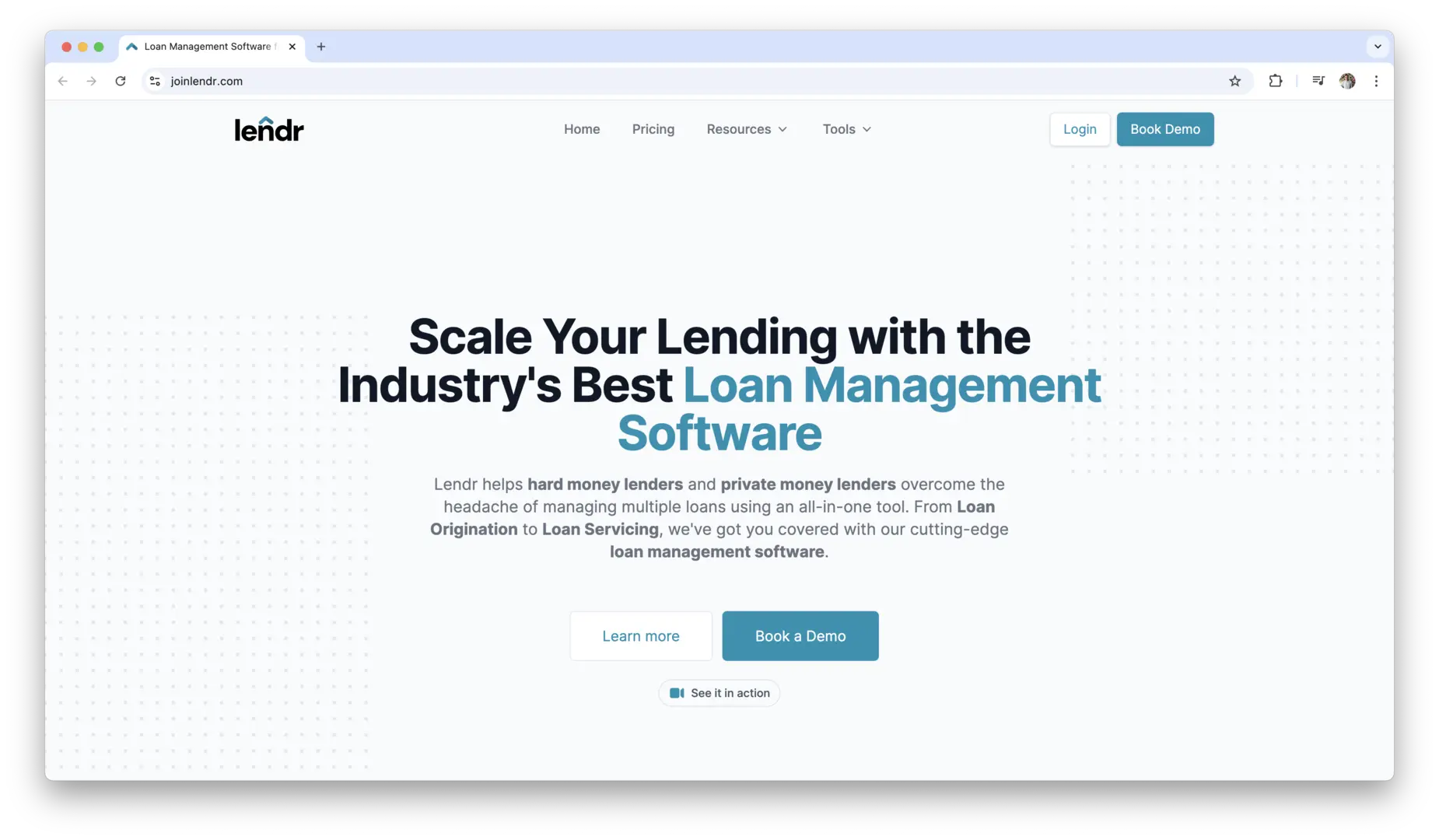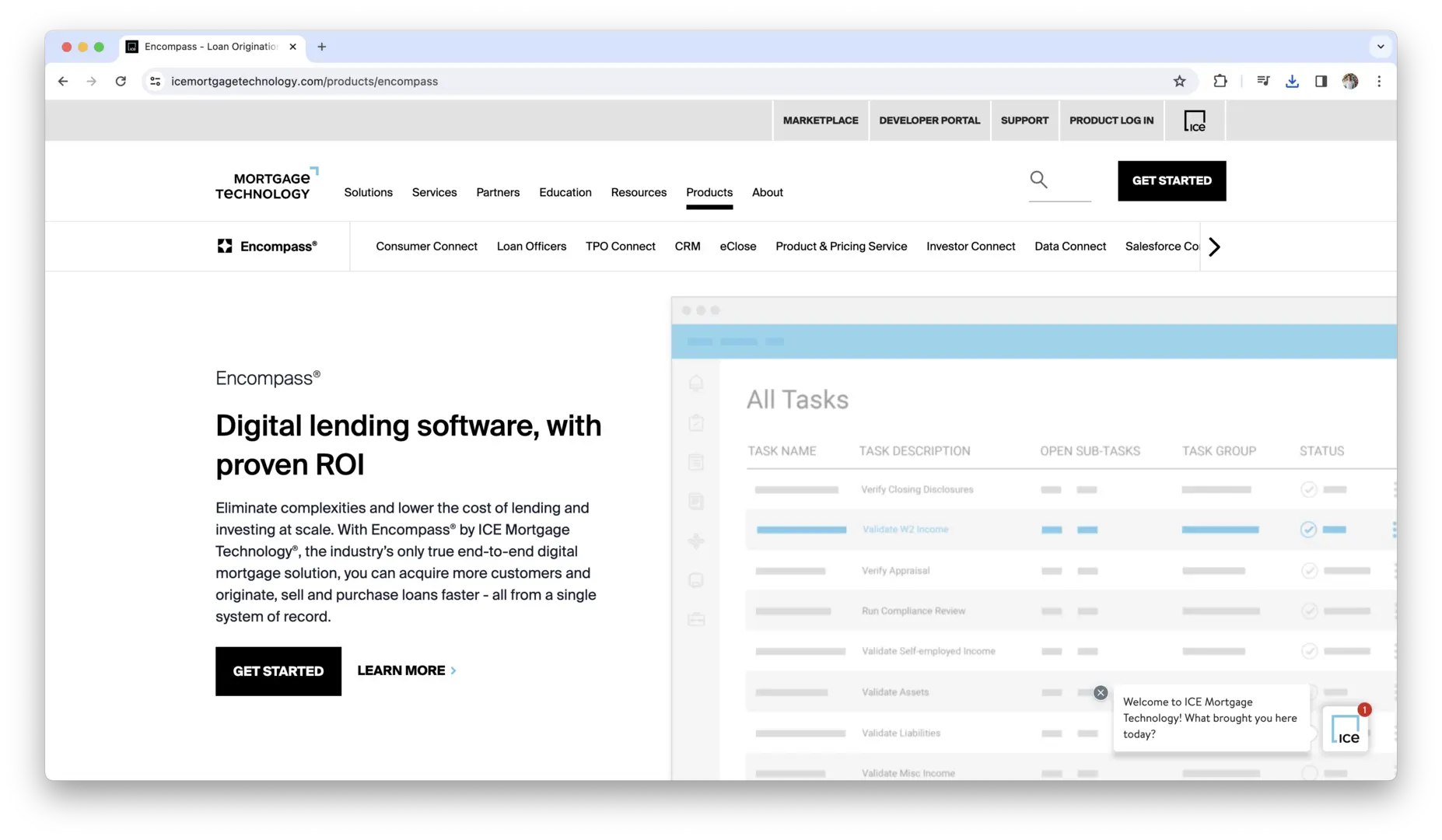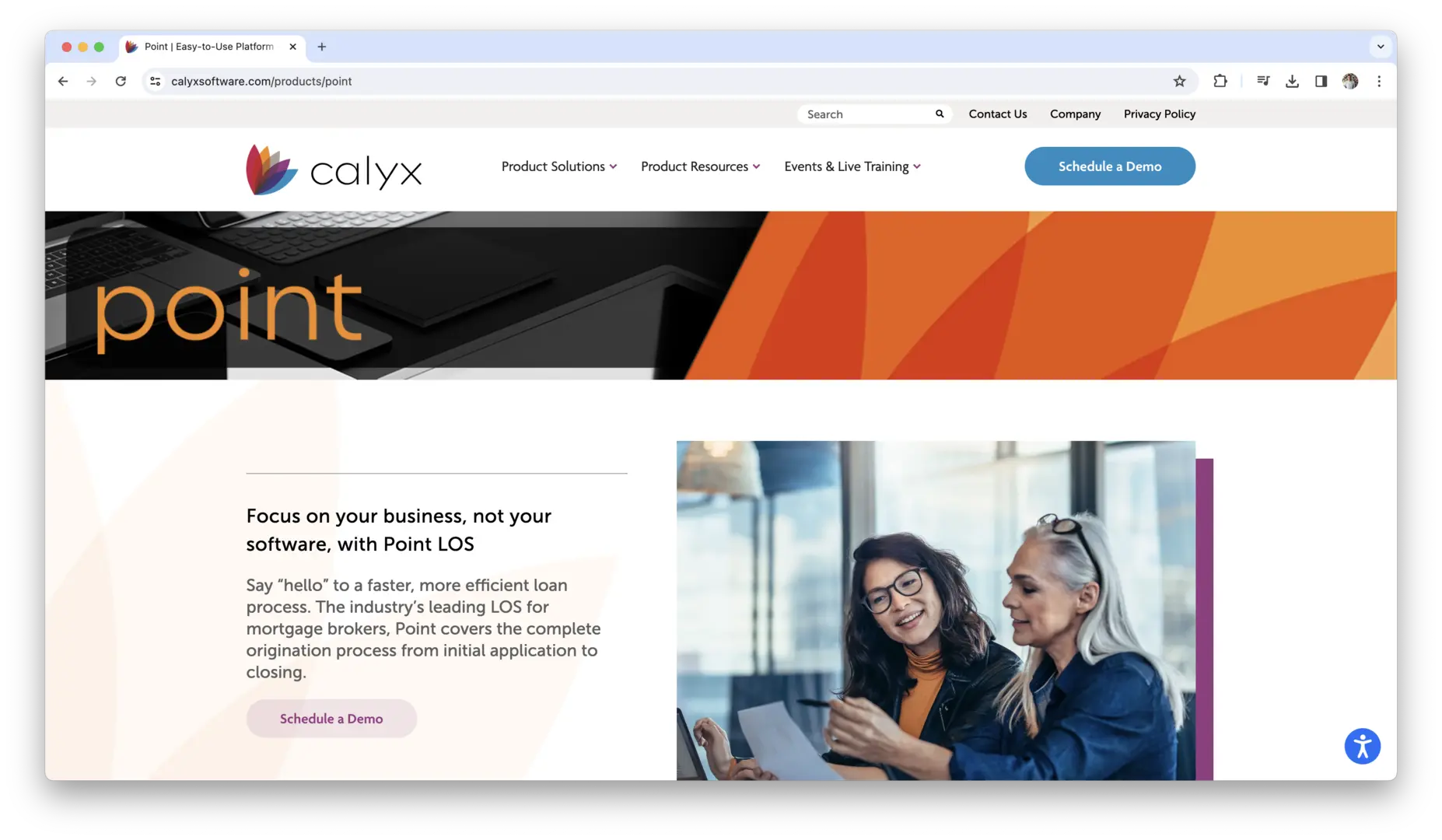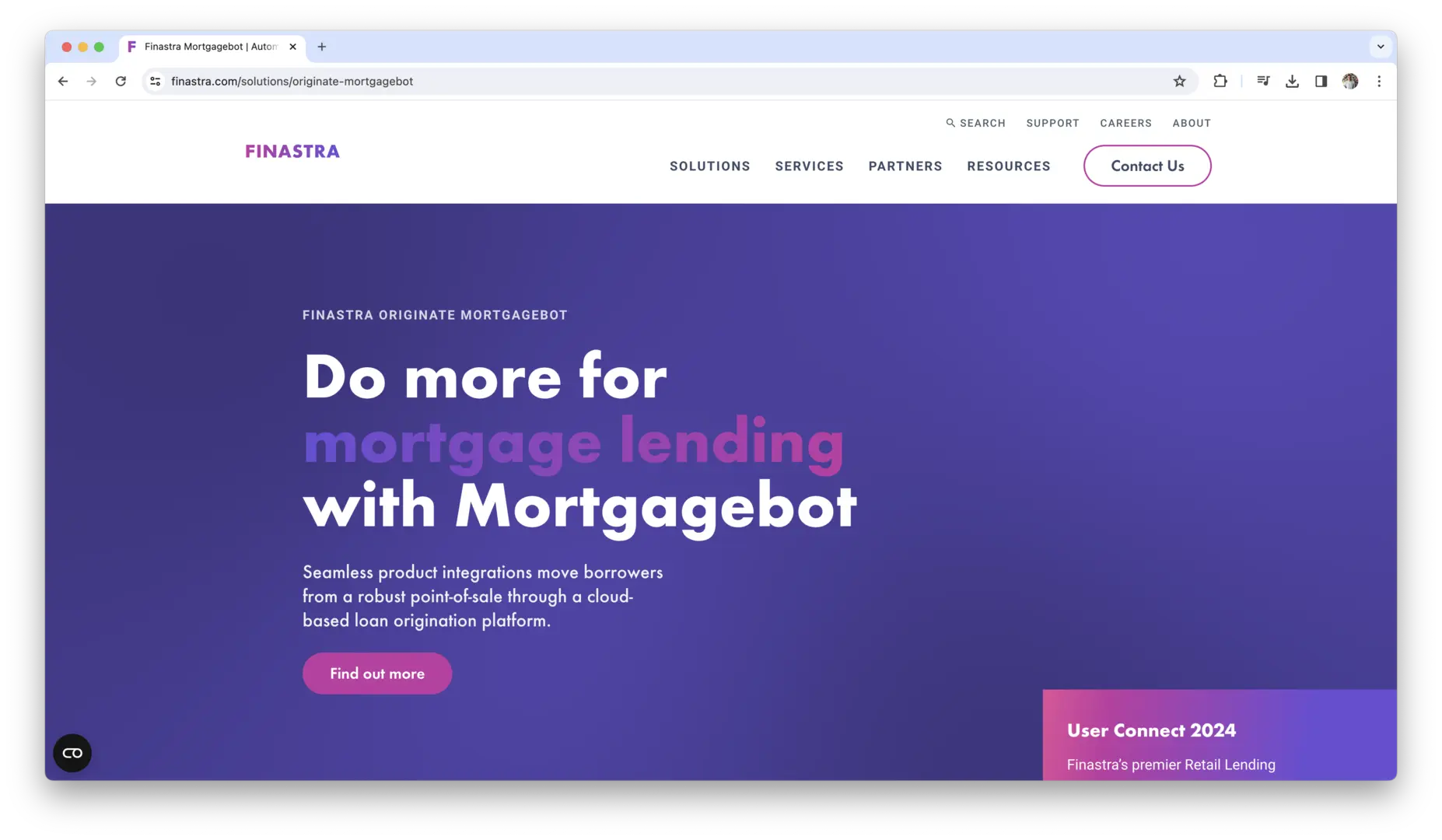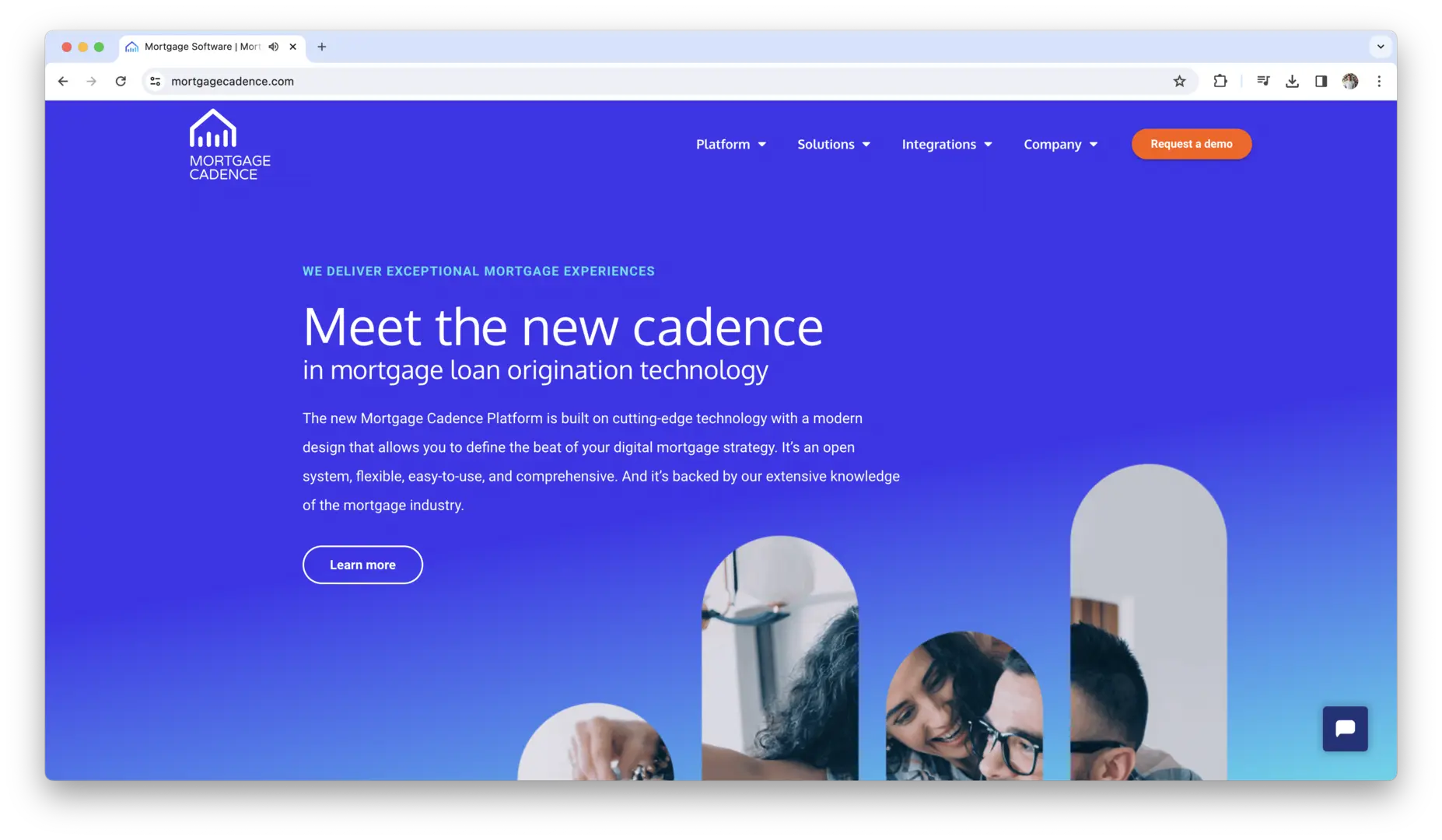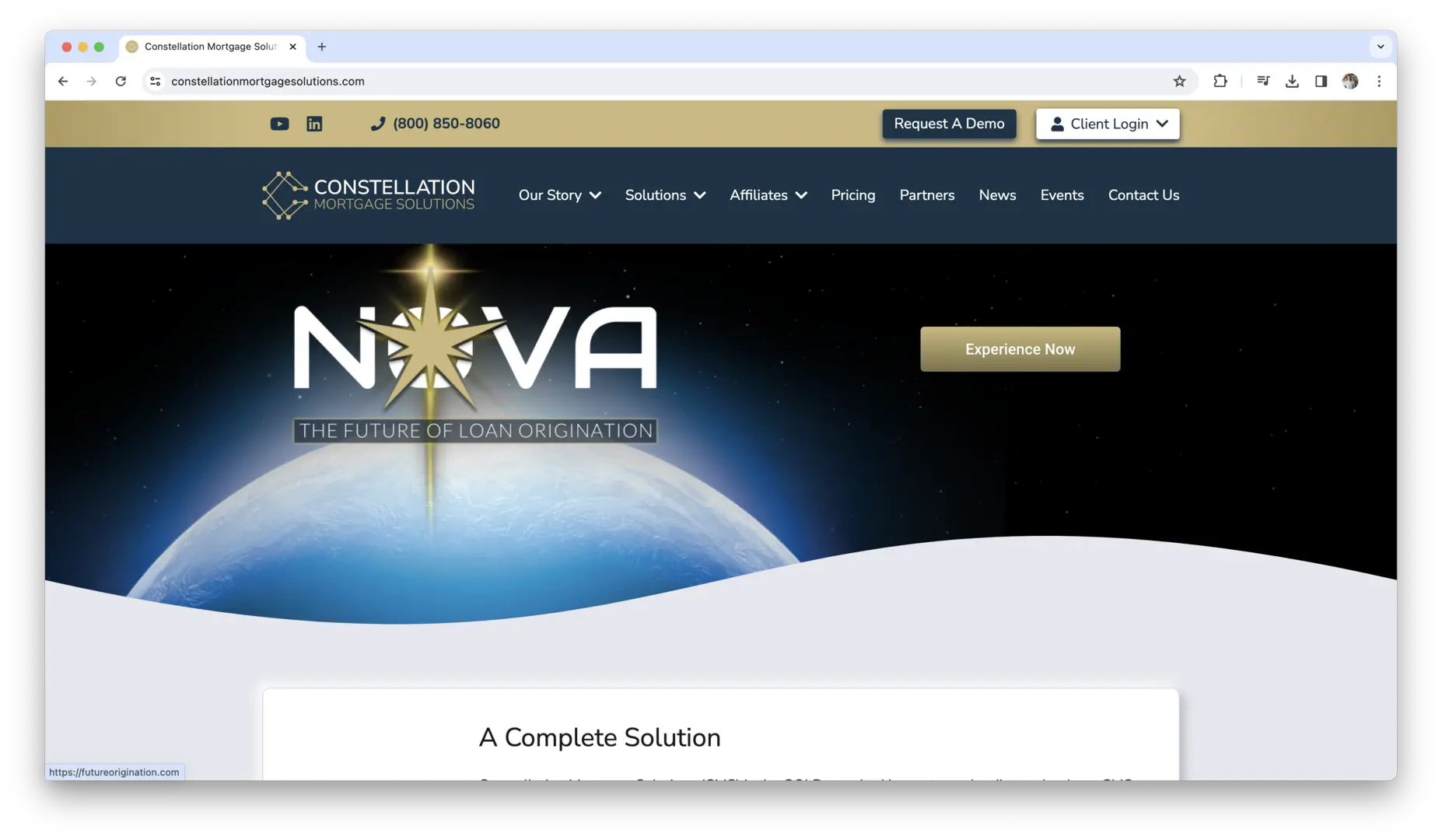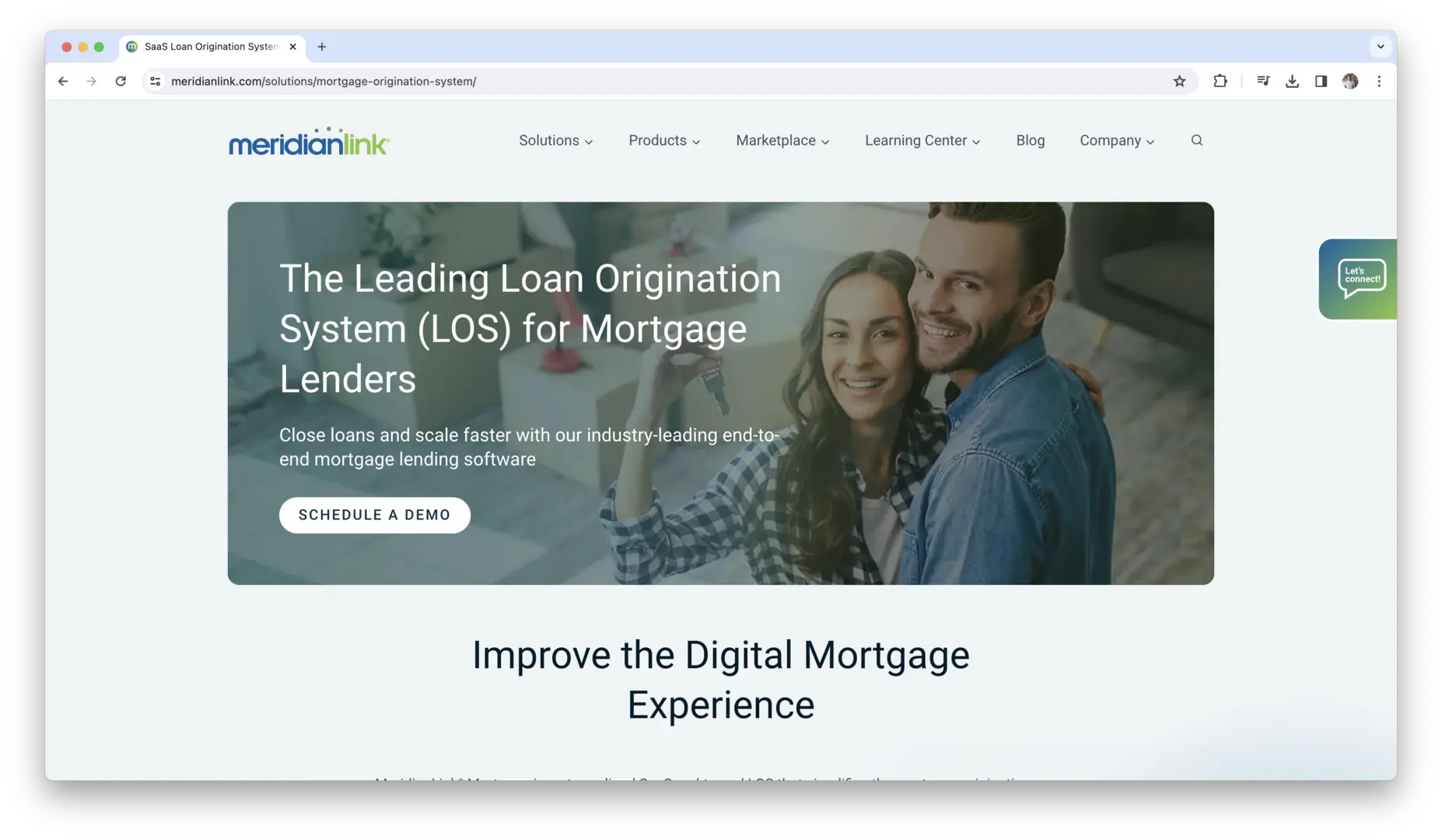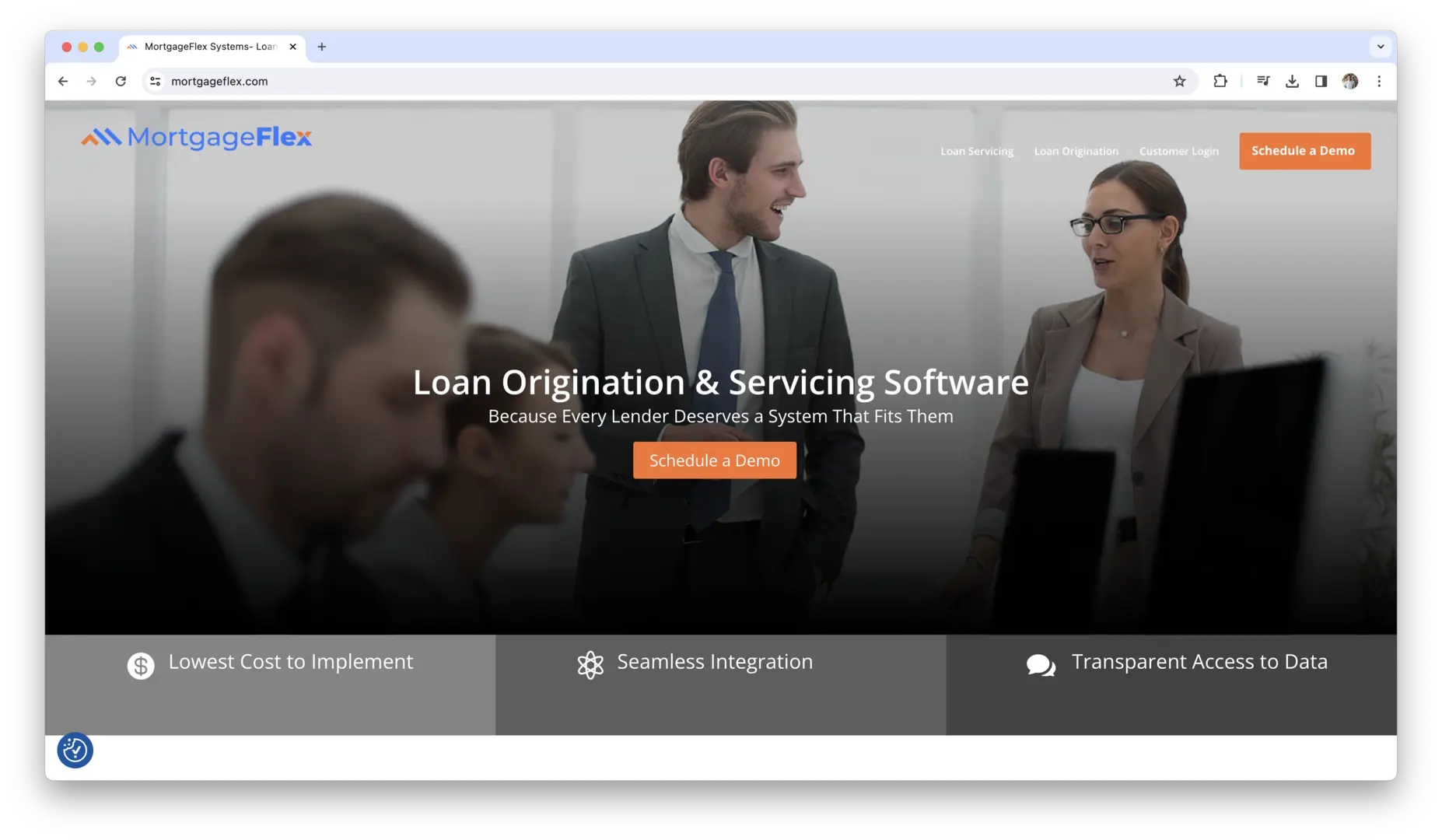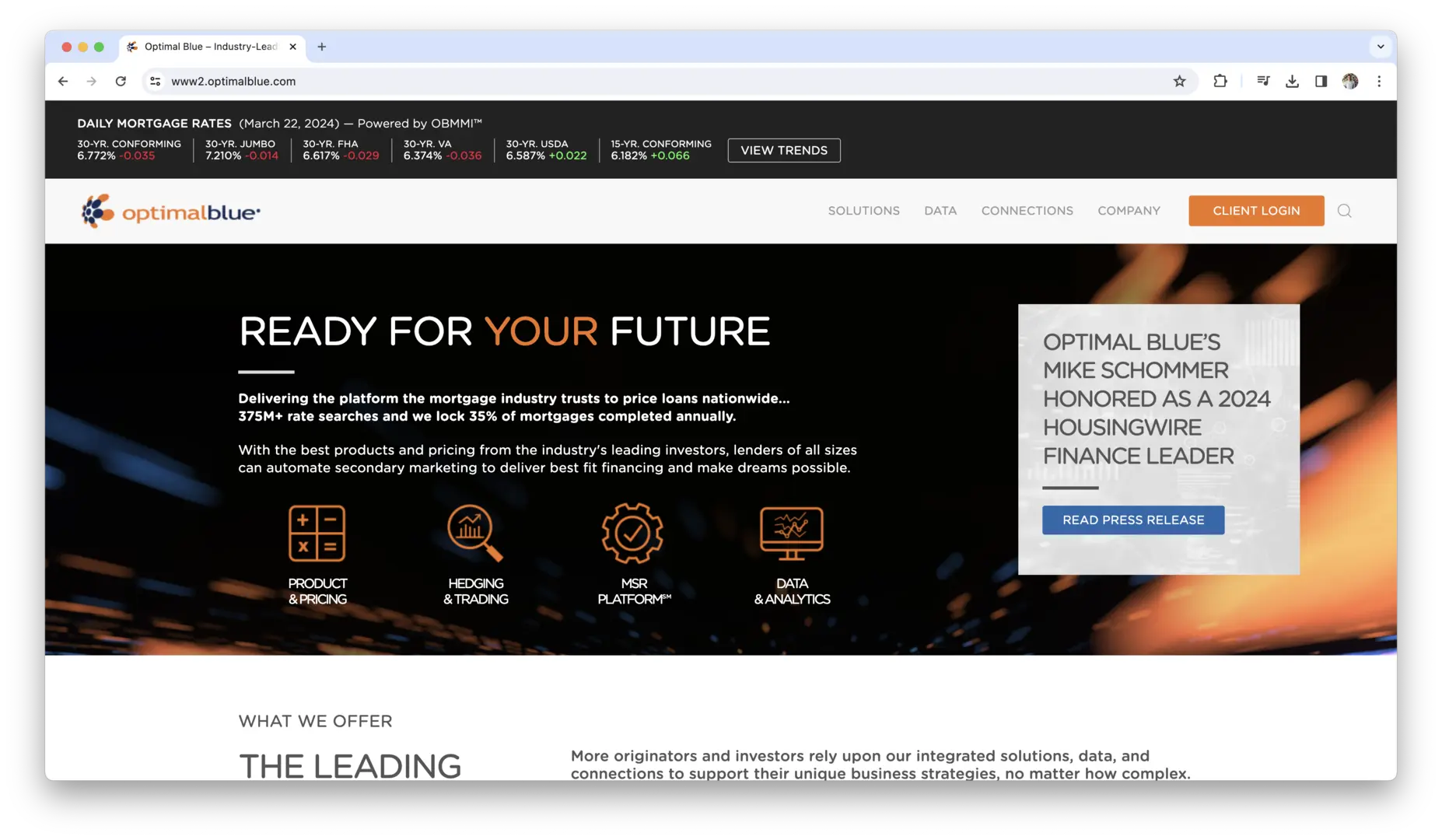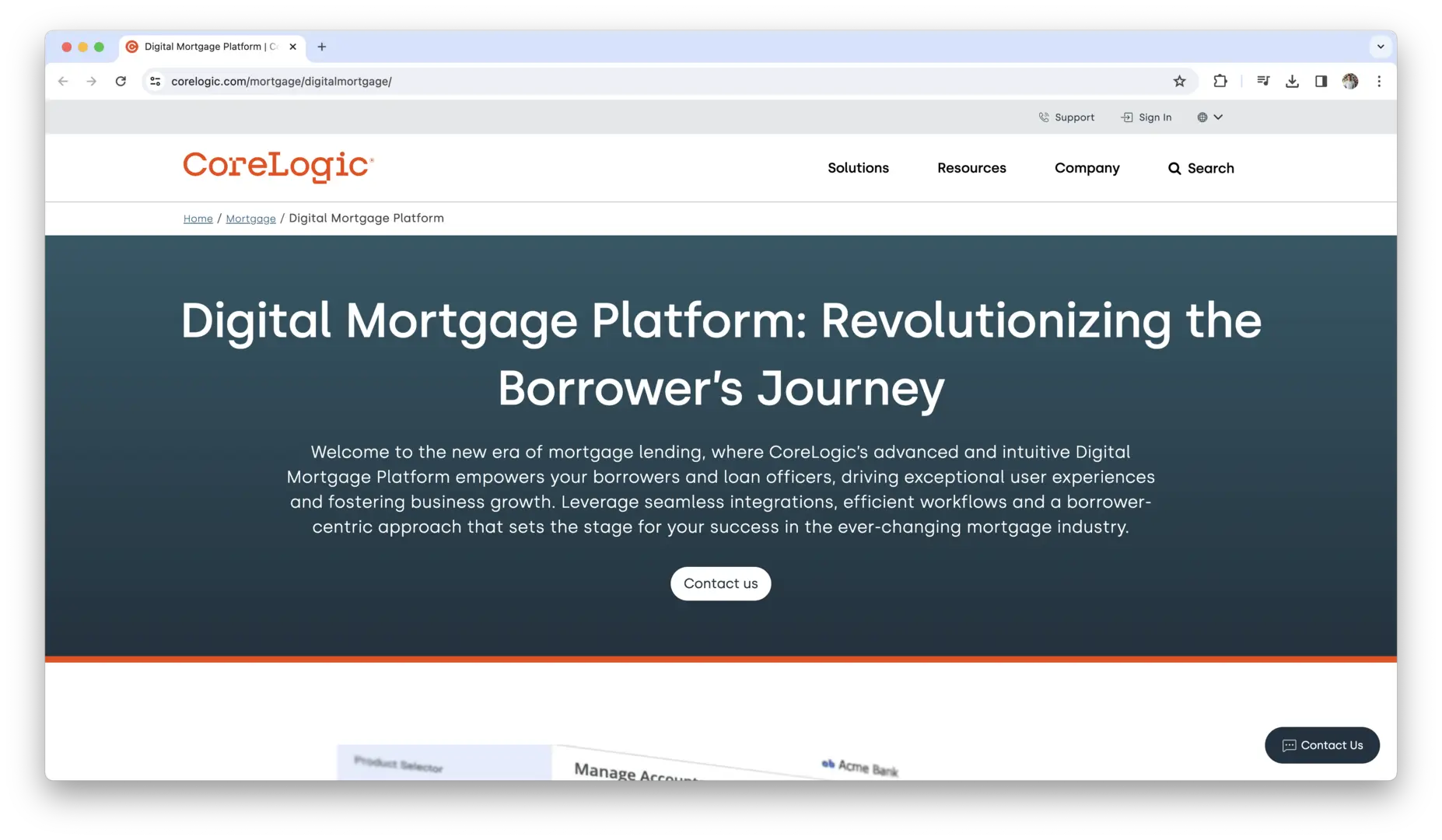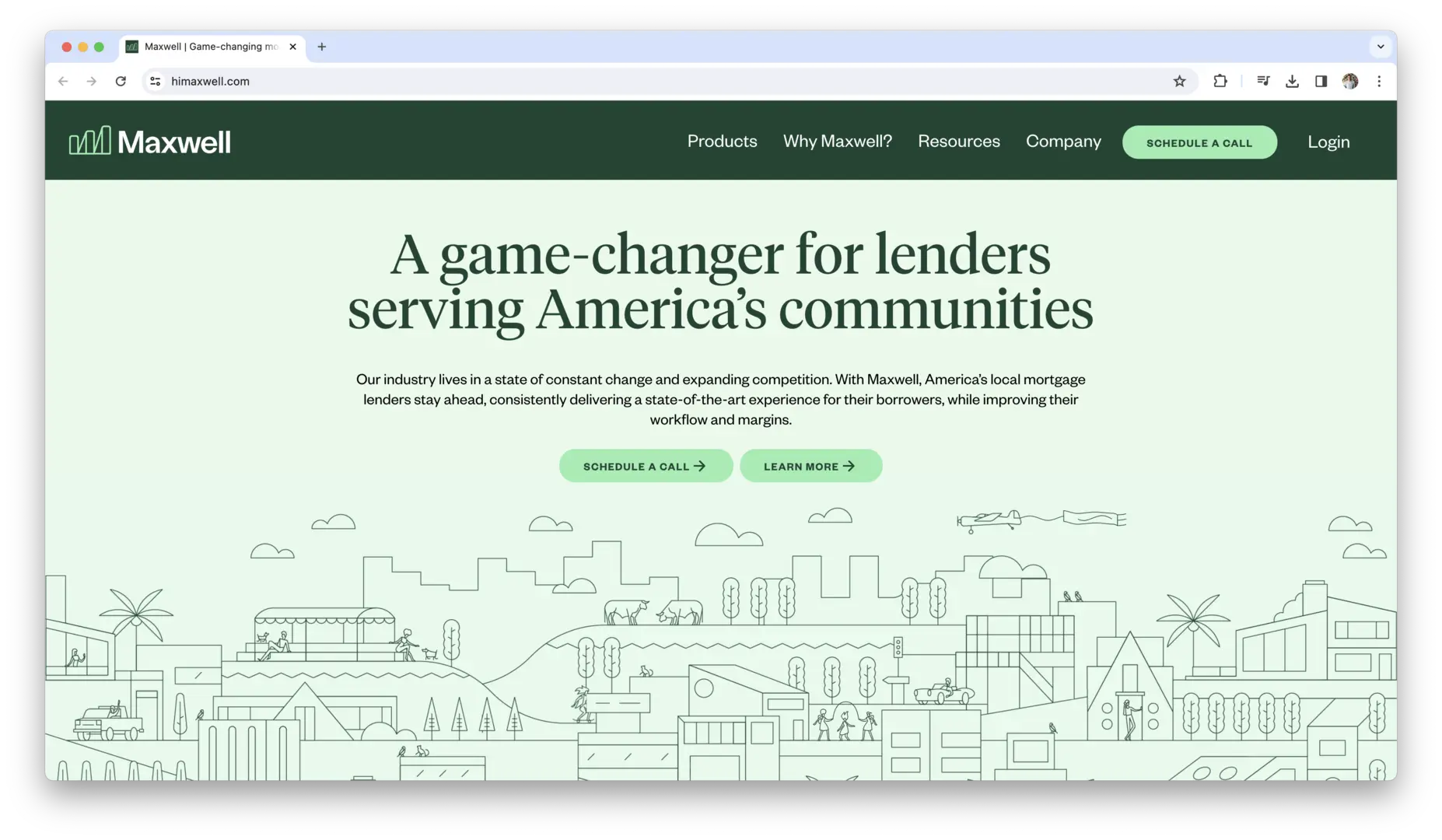- What is Loan Origination?
- Understanding Loan Origination Software
- Top Loan Origination Software & Systems
- How to Choose the Best Loan Origination Software?
- How to Implement Loan Origination Software?
- Loan Origination Software Best Practices
- Challenges and Solutions in Loan Origination Software Usage
- Conclusion
Are you looking to revolutionize your lending operations and streamline the loan origination process? In today’s fast-paced financial landscape, finding the right Loan Origination Software (LOS) is crucial for lenders seeking to stay competitive and meet the evolving needs of borrowers. From managing applications to assessing creditworthiness and ensuring compliance, LOS plays a pivotal role in modernizing lending operations and enhancing the borrower experience.
In this guide, we’ll explore everything you need to know about the best Loan Origination Software & Systems available in the market. Whether you’re a mortgage lender, bank, or credit union, this guide will equip you with the knowledge and insights to make informed decisions and optimize your lending operations with the right LOS solution.
What is Loan Origination?
Loan origination refers to the process of applying for, processing, and approving a loan. It encompasses all the steps involved from the initial application submission by the borrower to the disbursement of funds by the lender. The loan origination process typically includes tasks such as gathering borrower information, assessing creditworthiness, underwriting, approving or rejecting loan applications, and funding approved loans.
What is Loan Origination Software (LOS)?
Loan Origination Software (LOS) is a specialized technology solution designed to automate and streamline the loan origination process. It provides lenders with a centralized platform to manage all aspects of loan origination, from application intake to loan closing. LOS facilitates efficient data collection, credit analysis, documentation management, compliance tracking, and decision-making, enabling lenders to process loans more quickly and accurately than traditional manual methods.
Importance of LOS in the Lending Industry
- Enhanced Efficiency: LOS automates time-consuming manual tasks, such as data entry and document processing, reducing processing time and operational costs.
- Improved Accuracy: By leveraging data analytics and automation, LOS enhances the accuracy of credit assessments, reducing the risk of errors and fraud in the lending process.
- Streamlined Workflow: LOS provides a centralized platform for managing loan origination workflows, facilitating collaboration among loan officers, underwriters, and other stakeholders.
- Compliance Adherence: LOS ensures compliance with regulatory requirements and internal policies throughout the loan origination process, reducing the risk of regulatory penalties and legal issues.
- Better Customer Experience: LOS enables borrowers to submit loan applications online, track application status in real-time, and receive prompt decisions, enhancing the overall customer experience and satisfaction.
- Data-driven Decision Making: LOS generates comprehensive reports and analytics, allowing lenders to monitor key performance indicators (KPIs), identify trends, and make data-driven decisions to optimize lending operations.
- Scalability and Flexibility: LOS can scale to accommodate growing loan volumes and adapt to changing business needs, making it suitable for institutions of all sizes and types.
Loan origination software plays a vital role in modernizing and optimizing lending operations, enabling lenders to stay competitive in an increasingly digital and fast-paced market environment.
Understanding Loan Origination Software
Loan Origination Software (LOS) is the backbone of modern lending operations, revolutionizing how financial institutions manage the loan origination process. Let’s delve deeper into its core components and functionalities.
Basic Loan Origination Software Functionalities
Loan Origination Software automates and streamlines the entire loan origination process, from application submission to approval and funding. Its primary goal is to enhance efficiency, accuracy, and compliance throughout the lending journey. Here’s a breakdown of its basic functionalities:
- Application Processing: LOS allows borrowers to submit loan applications digitally, eliminating the need for paper forms and manual data entry. This streamlines the initial stage of the lending process and reduces processing time.
- Credit Analysis: Advanced algorithms within LOS evaluate borrowers’ creditworthiness based on various factors such as credit history, income, debt-to-income ratio, and collateral. This automated credit analysis helps lenders make informed decisions quickly and accurately.
- Documentation Management: LOS enables electronic storage, retrieval, and management of loan-related documents, eliminating the hassle of paper-based documentation. From income verification to property appraisals, all necessary documents can be securely stored and accessed within the system.
- Compliance Tracking: Compliance is a critical aspect of lending operations, with numerous regulations governing the industry. LOS ensures adherence to regulatory requirements such as Truth in Lending Act (TILA), Real Estate Settlement Procedures Act (RESPA), and Fair Lending Laws. Automated compliance checks and audits minimize the risk of penalties and legal issues.
- Integration Options: To enhance functionality and efficiency, LOS integrates seamlessly with various third-party systems and services. This includes credit bureaus, document verification services, core banking systems, and customer relationship management (CRM) platforms. Integration eliminates data silos and allows for real-time information exchange.
Types of Loans Supported
Loan Origination Software caters to a diverse range of loan types, meeting the needs of both consumers and businesses. Here are the main categories of loans supported:
- Mortgages: LOS designed for mortgage lending facilitates the origination of home loans for purchasing, refinancing, or renovating residential properties. It accommodates various mortgage products, including conventional loans, FHA loans, VA loans, and jumbo loans.
- Consumer Loans: Personal loans, auto loans, student loans, and other forms of consumer credit are processed efficiently through LOS. Whether it’s a small personal loan or a large auto financing arrangement, the software streamlines the application, underwriting, and funding processes.
- Commercial Loans: LOS for commercial lending caters to businesses of all sizes, providing financing solutions such as term loans, lines of credit, equipment financing, and commercial real estate loans. It facilitates complex underwriting processes and ensures compliance with commercial lending regulations.
Key Features and Capabilities
Loan Origination Software offers a wide array of features and capabilities to meet the diverse needs of lenders and borrowers alike. Here’s a closer look at some key features:
- Automated Decisioning: LOS employs rules-based engines or machine learning algorithms to automate loan approval decisions. By analyzing applicant data against predefined criteria, the software accelerates the decision-making process while maintaining consistency and fairness.
- Mobile Accessibility: In today’s mobile-centric world, borrowers expect the convenience of applying for loans and tracking application status on their smartphones or tablets. LOS with mobile accessibility ensures a seamless user experience across desktop and mobile devices, enhancing borrower satisfaction and engagement.
- Pipeline Management: Lenders deal with a constant influx of loan applications, making pipeline management a critical aspect of operations. LOS provides a centralized dashboard where lenders can view and manage all pending applications, track progress, and prioritize tasks efficiently.
- Reporting and Analytics: Data-driven insights are invaluable for optimizing lending operations and identifying areas for improvement. LOS generates comprehensive reports and analytics, allowing lenders to monitor key performance indicators (KPIs), track application trends, and make data-driven decisions.
- Document Generation: From loan agreements to disclosures and closing documents, LOS automates the generation of essential loan documents. This reduces manual errors, ensures compliance with regulatory requirements, and expedites the closing process for borrowers.
With a clear understanding of Loan Origination Software and its functionalities, you’re better equipped to explore the factors to consider when choosing the right solution for your lending institution.
Top Loan Origination Software & Systems
The market for Loan Origination Software (LOS) is vast, with numerous providers offering solutions tailored to the needs of various financial institutions. When selecting the right LOS for your organization, it’s essential to consider factors such as functionality, scalability, integration capabilities, compliance features, and user experience. Here, we’ll explore some of the top LOS providers known for their robust features, reliability, and industry reputation.
Lendr
Lendr is a powerful Loan Origination System (LOS) built specifically for private and hard money lenders, offering a seamless experience from loan intake to servicing and payoff. Unlike traditional mortgage-focused platforms, Lendr is designed to meet the unique needs of private lenders, providing investor and borrower portals, automated payment collection, and capital management tools.
Key Features:
- End-to-End Loan Management – Handle everything from loan intake, underwriting, and document generation to servicing and payoff.
- Borrower & Investor Portals – Give borrowers and investors secure access to track loans, make payments, and manage capital.
- Investor Capital Management – Efficiently track investor funds, distributions, and reporting.
- Automated ACH Payment Collection – Collect borrower payments seamlessly, reducing manual processing.
- Document Generation & eSign – Generate loan docs, send for electronic signature, and stay compliant.
- Credit & Underwriting Tools – Integrated credit checks and underwriting workflows to streamline approvals.
With Lendr, private lenders get a scalable, all-in-one LOS designed for efficiency, compliance, and investor confidence.
Learn more at joinlendr.com.
HES FinTech
HES FinTech offers a complete digital lending software solution designed to revolutionize your loan automation process. With its clean, intuitive interface, the platform is easy to adopt, speeding up loan processing by 2.5x and increasing decision accuracy by 3.5x. Leverage AI-driven automation to accelerate underwriting, reduce non-performing loans (NPLs), and make data-backed loan decisions with unprecedented speed and precision.
The 3-in-1 platform includes a customizable landing website, a user-friendly borrower portal, and a comprehensive back office, empowering your team with seamless collaboration and full control over lending operations. Automate everything from loan scoring and credit portfolio assessments to debt collection, ensuring fewer human errors and faster, more profitable outcomes.
Designed for scalability, HES FinTech’s software supports everything from consumer lending to complex commercial finance. With quick implementation, expert support, and a strong focus on security, HES FinTech is the ideal solution for businesses ready to drive profit, enhance client satisfaction, and grow rapidly in the digital lending space.
Encompass
Ice Mortgage Technology’s Encompass is a widely recognized LOS solution trusted by thousands of lenders, banks, and credit unions. Known for its comprehensive suite of features, Encompass offers end-to-end loan origination capabilities, including application processing, credit analysis, compliance tracking, and document management. Its user-friendly interface, customizable workflows, and seamless integrations make it a popular choice among lenders of all sizes.
Calyx Point
Calyx Point is another leading LOS platform preferred by mortgage professionals for its flexibility and scalability. With Point, lenders can efficiently manage the entire loan origination process, from application intake to closing. The software offers robust features such as automated underwriting, document generation, pipeline management, and electronic signature capabilities. Point’s intuitive interface and extensive customization options make it an ideal solution for mortgage brokers and lenders.
Originate Mortgagebot
Finastra’s Originate Mortgagebot is a cloud-based LOS designed to streamline the mortgage origination process for banks and credit unions. Originate Mortgagebot offers a range of features, including online application intake, automated decisioning, compliance tracking, and electronic document management. Its scalability, flexibility, and integration capabilities make it suitable for institutions looking to modernize their mortgage lending operations and enhance the borrower experience.
Mortgage Cadence
Mortgage Cadence is a sophisticated LOS platform designed to meet the complex needs of mortgage lenders and banks. Mortgage Cadence offers advanced features such as intelligent automation, predictive analytics, and configurable decisioning rules to streamline the loan origination process. Its seamless integrations with third-party systems, customizable dashboards, and built-in compliance tools make it a top choice for lenders looking to optimize efficiency and mitigate risk.
Constellation Mortgage Solutions
Constellation Mortgage Solutions (previously Mortgage Builder) is a flexible LOS solution trusted by mortgage lenders for its scalability and customization options. With Mortgage Builder, lenders can efficiently manage the entire loan origination process, from application intake to funding. The software offers features such as automated underwriting, document management, compliance tracking, and customer relationship management (CRM) integration, making it a preferred choice for lenders seeking a tailored solution.
MeridianLink
MeridianLink is a cloud-based LOS platform designed to simplify the mortgage origination process for lenders of all sizes. LendingQB offers intuitive workflows, automated decisioning, and real-time analytics to streamline operations and increase efficiency. Its seamless integrations with third-party systems, mobile accessibility, and responsive customer support make it an ideal choice for lenders looking to enhance their digital lending capabilities.
MortgageFlex Systems
MortgageFlex Systems is a robust LOS platform known for its flexibility and configurability. MortgageFlex offers features such as automated underwriting, document management, compliance tracking, and reporting tools to streamline the loan origination process. Its modular architecture allows lenders to customize the software to meet their specific business needs, making it suitable for mortgage lenders, banks, and credit unions.
Optimal Blue
Optimal Blue is a comprehensive LOS solution designed to simplify the mortgage origination process for lenders and brokers. It offers features such as loan application intake, pricing engine integration, compliance management, and automated underwriting to streamline operations and improve efficiency. Its seamless integration with Optimal Blue’s product and pricing engine ensures accurate and competitive loan pricing for borrowers.
CoreLogic
CoreLogic (previously Roostify) is a modern LOS platform that offers a seamless digital mortgage experience for borrowers, lenders, and real estate agents. CoreLogic’s platform streamlines the loan origination process by providing a user-friendly interface, automated workflows, and document management capabilities. Its integrations with third-party systems, secure data exchange, and personalized borrower portals make it an attractive option for lenders looking to digitize their mortgage operations.
Maxwell
Maxwell (previously Revvin) is an innovative LOS platform focused on delivering a modern and intuitive mortgage experience for borrowers and lenders. MortgageHippo offers features such as online application intake, automated document collection, and e-signature capabilities to streamline the loan origination process. Its configurable workflows, compliance tools, and analytics dashboards empower lenders to improve efficiency and deliver superior customer service.
When evaluating LOS providers, it’s essential to conduct thorough research, schedule demos, and consider factors such as cost, implementation timeline, customer support, and user feedback. By selecting the right LOS solution for your organization’s needs, you can streamline operations, improve productivity, and enhance the overall borrower experience.
How to Choose the Best Loan Origination Software?
Selecting the right Loan Origination Software (LOS) is a crucial decision for your lending institution. Several factors need to be taken into account to ensure that the chosen solution aligns with your business requirements and objectives. Let’s explore these factors in detail.
Scalability and Flexibility
Scalability refers to the ability of the LOS to accommodate your institution’s growth without compromising performance or functionality.
- Loan Volume: Evaluate whether the software can handle increasing loan volumes as your institution expands its lending operations.
- Multi-channel Support: Ensure that the LOS can support various distribution channels, such as branches, online platforms, and mobile apps, to cater to diverse customer preferences.
- Future Expansion: Assess whether the software offers features and functionalities that can adapt to evolving market trends and regulatory changes.
Customization Options
Every lending institution has unique processes and requirements. Look for LOS solutions that offer a high degree of customization to tailor the software to your specific needs.
- Workflow Configuration: The ability to configure loan origination workflows to match your institution’s unique processes and requirements.
- User Interface Customization: Customizable user interfaces that allow you to personalize the look and feel of the software to align with your brand identity and user preferences.
- Product and Pricing Configuration: Flexibility in configuring loan products, pricing models, and eligibility criteria to accommodate varying lending policies and strategies.
User Interface and Ease of Use
An intuitive user interface (UI) plays a vital role in user adoption and productivity. Evaluate the following aspects of the LOS UI:
- Ease of Navigation: The UI should be intuitive and easy to navigate, minimizing the learning curve for users.
- Accessibility: Ensure that the software is accessible across different devices and screen sizes, including desktops, laptops, tablets, and smartphones.
- Workflow Efficiency: Evaluate the workflow design and user interactions to ensure that tasks can be completed efficiently without unnecessary friction.
Integration Capabilities with Existing Systems
Seamless integration with your institution’s existing systems is essential for data consistency and operational efficiency.
- API Support: Check if the LOS offers robust APIs that allow integration with core banking systems, CRM platforms, credit bureaus, and other third-party applications.
- Data Exchange Formats: Ensure compatibility with common data exchange formats such as XML, JSON, and CSV to facilitate smooth data interchange between systems.
- Data Mapping and Transformation: Evaluate the software’s ability to map and transform data between different systems to ensure data accuracy and consistency.
Regulatory Compliance and Security Measures
Compliance with regulatory requirements and robust security measures are non-negotiable in the lending industry. Look for the following compliance and security features:
- Regulatory Compliance: Verify that the LOS complies with relevant regulations such as TRID, RESPA, AML/KYC, and GDPR to mitigate legal and regulatory risks.
- Data Encryption: Ensure that sensitive borrower information is encrypted both in transit and at rest to protect against data breaches and unauthorized access.
- Audit Trails and Logging: The LOS should maintain comprehensive audit trails and logs to track user activities and changes to loan data for compliance and accountability purposes.
Pricing Models and Costs
Understanding the pricing structure and total cost of ownership (TCO) of the LOS is essential for budgeting and financial planning.
- Subscription vs. Perpetual License: Compare subscription-based pricing models with one-time licensing fees to determine the most cost-effective option for your institution.
- Implementation Costs: Factor in upfront implementation costs, including software setup, configuration, data migration, and training expenses.
- Ongoing Support Fees: Evaluate ongoing support and maintenance fees, including software updates, technical support, and access to training resources.
Customer Support and Training
Reliable customer support and comprehensive training resources are essential for a smooth implementation and ongoing use of the LOS.
- 24/7 Support: Check if the LOS provider offers round-the-clock customer support to address urgent issues and queries promptly.
- Training Programs: Assess the availability of training materials, documentation, online tutorials, and instructor-led training sessions to onboard users and maximize software proficiency.
- User Community: Look for a vibrant user community or forum where users can share best practices, ask questions, and seek advice from peers and experts.
By carefully evaluating these factors, you can make an informed decision when choosing the right Loan Origination Software for your institution. Now, let’s explore the top providers in the market and compare their offerings.
How to Implement Loan Origination Software?
Implementing Loan Origination Software (LOS) is a significant undertaking for any lending institution. It requires careful planning, seamless execution, and ongoing optimization to ensure a successful transition and maximize the benefits of the new system. Let’s explore the key steps involved in implementing LOS.
Planning the Implementation Process
Effective planning is essential to ensure a smooth and successful implementation of LOS. This phase involves defining project goals, establishing timelines, allocating resources, and identifying key stakeholders.
- Project Scope: Clearly define the scope of the implementation project, including the specific modules and functionalities of the LOS to be deployed.
- Timeline and Milestones: Develop a detailed project timeline with specific milestones and deadlines to track progress and ensure timely completion.
- Resource Allocation: Allocate human and financial resources based on the project scope and complexity, ensuring sufficient support for all stages of implementation.
- Stakeholder Engagement: Identify key stakeholders, including executives, department heads, IT staff, and end users, and involve them in the planning process to gain buy-in and support.
Data Migration Considerations
Data migration is a critical aspect of LOS implementation, ensuring that existing borrower data and loan information are seamlessly transferred to the new system.
- Data Assessment: Conduct a comprehensive assessment of existing data sources, including databases, spreadsheets, and paper records, to identify relevant data for migration.
- Data Cleansing and Validation: Cleanse and validate data to ensure accuracy, completeness, and consistency before migrating it to the new system.
- Migration Strategy: Develop a migration strategy, including data mapping, transformation rules, and migration scripts, to facilitate a smooth transition without disrupting operations.
- Testing and Validation: Perform thorough testing and validation of migrated data to ensure that all records are accurately transferred and accessible within the LOS.
Training Staff on the New System
Proper training is essential to ensure that staff members are proficient in using the new LOS effectively.
- Role-Based Training: Tailor training programs to different user roles and responsibilities within the organization, including loan officers, underwriters, processors, and administrators.
- Hands-On Workshops: Conduct hands-on workshops and interactive training sessions to provide practical experience with the LOS and its features.
- Online Training Resources: Offer access to online training materials, video tutorials, and self-paced courses to accommodate diverse learning preferences and schedules.
- Ongoing Support: Provide ongoing support and assistance to users during the initial transition period and beyond, addressing any questions or challenges they may encounter.
Testing and Troubleshooting
Thorough testing is essential to identify and address any issues or discrepancies in the LOS before it goes live.
- Functional Testing: Test each module and feature of the LOS to ensure that it functions as intended and meets the specified requirements.
- Integration Testing: Verify the integration between the LOS and other systems, such as core banking platforms, CRM systems, and third-party services.
- User Acceptance Testing (UAT): Involve end users in UAT to validate the system’s usability, functionality, and performance from their perspective.
- Bug Fixing and Troubleshooting: Address any issues or bugs identified during testing promptly, working closely with the LOS provider or IT team to resolve them effectively.
Monitoring and Optimization Strategies
Once the LOS is implemented, ongoing monitoring and optimization are necessary to ensure its continued effectiveness and alignment with organizational goals.
- Performance Monitoring: Monitor key performance indicators (KPIs), such as application processing time, approval rates, and customer satisfaction, to identify areas for improvement.
- User Feedback and Suggestions: Solicit feedback from users on their experience with the LOS and their suggestions for enhancements or optimizations.
- Continuous Training and Education: Provide ongoing training and education opportunities to staff members to keep them updated on new features, best practices, and industry trends.
- System Updates and Upgrades: Stay informed about system updates, patches, and new releases from the LOS provider, and implement them promptly to leverage the latest features and enhancements.
By following these implementation best practices, you can ensure a smooth transition to Loan Origination Software and maximize its benefits for your lending institution. Now, let’s explore some best practices for maximizing the efficiency of LOS in daily operations
Loan Origination Software Best Practices
To optimize the efficiency of Loan Origination Software (LOS) and streamline lending operations, consider implementing the following best practices:
- Streamlining Workflows: Review and streamline loan origination workflows to eliminate redundant steps and minimize manual interventions. Automate repetitive tasks such as data entry, document generation, and communication with borrowers to reduce processing time and increase throughput.
- Leveraging Automation Features: Take full advantage of the automation features offered by LOS, such as automated decisioning, rules-based routing, and notifications. Configure the system to automatically route loan applications to the appropriate stakeholders based on predefined criteria, reducing bottlenecks and accelerating decision-making.
- Regularly Updating and Maintaining the Software: Stay current with software updates, patches, and bug fixes provided by the LOS provider. Regularly review and optimize system configurations, rules, and workflows to ensure optimal performance and compliance with evolving regulatory requirements.
- Monitoring Performance Metrics and KPIs: Establish key performance indicators (KPIs) and metrics to measure the efficiency and effectiveness of LOS. Monitor metrics such as application turnaround time, loan approval rates, loan processing costs, and customer satisfaction scores to identify areas for improvement and track progress over time.
- Staying Informed About Industry Trends and Advancements: Stay abreast of industry trends, technological advancements, and regulatory changes impacting the lending landscape. Participate in industry forums, conferences, and webinars to gain insights into emerging best practices, innovative solutions, and regulatory updates that can inform your LOS strategy.
Challenges and Solutions in Loan Origination Software Usage
While Loan Origination Software (LOS) offers numerous benefits, its implementation and usage may present challenges. Here are some common challenges and solutions:
- Complexity of Integration: Integrating LOS with existing systems and third-party services can be complex and time-consuming. Solution: Prioritize seamless integration by working closely with the LOS provider and leveraging standardized APIs and data exchange formats to facilitate data sharing and interoperability.
- Compliance Risks: Ensuring compliance with regulatory requirements such as TRID, RESPA, and Fair Lending Laws can be challenging due to evolving regulations and complex legal frameworks. Solution: Implement robust compliance management processes, including automated compliance checks, audit trails, and regular staff training on regulatory updates and best practices.
- Data Security Concerns: Safeguarding sensitive borrower information and preventing data breaches are paramount in the lending industry. Solution: Implement stringent data security measures, such as encryption, access controls, multi-factor authentication, and regular security audits, to protect confidential data and mitigate security risks.
- User Adoption Issues: Resistance to change and lack of user buy-in can hinder the successful adoption of LOS. Solution: Engage stakeholders early in the implementation process, provide comprehensive training and support, and communicate the benefits of LOS adoption to all users. Solicit feedback and address user concerns promptly to foster a positive user experience.
- Performance Bottlenecks: Poor system performance, slow processing times, and downtime can disrupt operations and impact customer satisfaction. Solution: Conduct regular performance assessments, identify and address bottlenecks through system optimization, capacity planning, and infrastructure upgrades. Implement robust disaster recovery and contingency plans to minimize downtime and ensure business continuity.
By proactively addressing these challenges and implementing effective solutions, you can overcome obstacles and maximize the benefits of Loan Origination Software for your lending institution.
Conclusion
Selecting the best Loan Origination Software (LOS) is a critical decision for lenders aiming to streamline their operations and enhance the borrower experience. By understanding the functionalities, importance, and factors to consider when choosing LOS, lenders can make informed decisions that align with their specific needs and goals. Whether it’s improving efficiency, ensuring compliance, or staying competitive in the market, the right LOS solution can make a significant difference in the success of lending operations. With a wide range of providers offering robust features and capabilities, lenders have the opportunity to modernize their processes and meet the ever-changing demands of the lending industry.
In the dynamic landscape of finance, LOS continues to evolve, offering innovative solutions to meet the evolving needs of lenders and borrowers alike. As technology advances and regulatory requirements shift, staying abreast of industry trends and advancements is crucial for lenders seeking to maximize the efficiency and effectiveness of their LOS. By implementing best practices, addressing challenges proactively, and leveraging the capabilities of top LOS providers, lenders can optimize their loan origination processes, improve customer satisfaction, and achieve greater success in the competitive lending market. With the right LOS solution in place, lenders can embark on a journey of digital transformation, unlocking new opportunities for growth, efficiency, and innovation in their lending operations.
Get Started With a Prebuilt Template!
Looking to streamline your business financial modeling process with a prebuilt customizable template? Say goodbye to the hassle of building a financial model from scratch and get started right away with one of our premium templates.
- Save time with no need to create a financial model from scratch.
- Reduce errors with prebuilt formulas and calculations.
- Customize to your needs by adding/deleting sections and adjusting formulas.
- Automatically calculate key metrics for valuable insights.
- Make informed decisions about your strategy and goals with a clear picture of your business performance and financial health.

